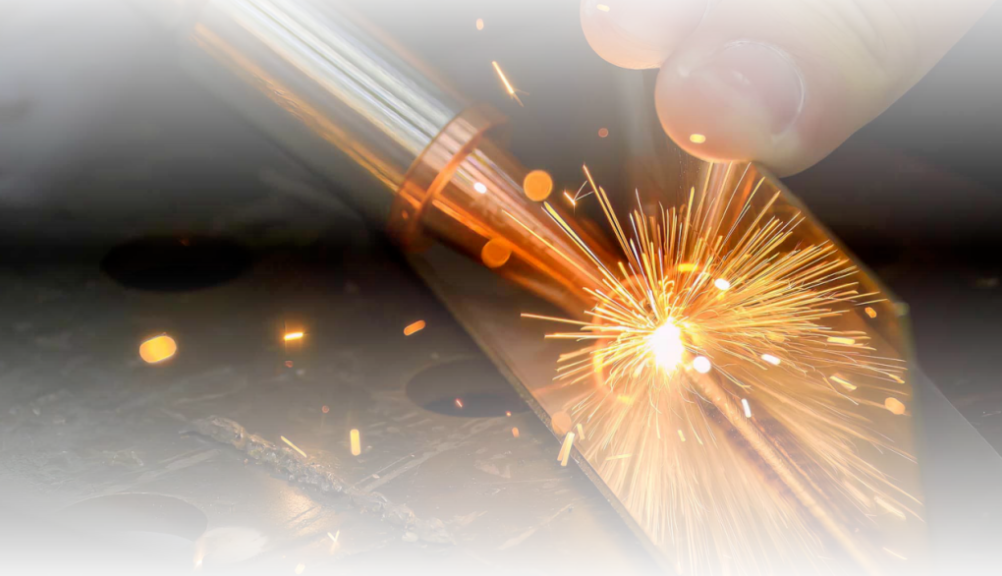1.1 Laser Welding Occupies the Midstream of the Industry, with Better Growth Prospects than Cutting and Marking
Laser welding equipment is located in the midstream of the industrial chain.The upstream of the laser industry chain includes optical materials, optical components and devices, mechanical parts, etc. The midstream consists of lasers and laser equipment. Lasers are the core components of laser equipment, and laser processing equipment mainly includes laser cutting, laser welding, and laser marking equipment. The downstream fields mainly include lithium batteries, semiconductors, photovoltaics, consumer electronics, etc.
The laser market has huge potential, with fiber lasers dominating applications, while solid-state lasers are suitable for fine micro-machining. According to Laser Focus World statistics, the global laser market size increased from $13.07 billion in 2017 to $16.01 billion in 2020, with a CAGR of 13.37%. In comparison, China’s laser market grew from $6.95 billion in 2017 to $10.91 billion in 2020, with a CAGR of 16.22%. From 2017 to 2020, China’s share of the global laser market rose from 53.2% to 68.1%. In 2020, industrial lasers accounted for 32.2% of the global laser market, making the industrial sector the primary downstream application. Classified by gain medium, lasers mainly include fiber lasers, solid-state lasers (excluding fiber lasers), liquid lasers, and gas lasers. In 2020, fiber lasers and solid-state lasers accounted for 52.7% and 16.7% of industrial laser applications, respectively, with fiber lasers dominating industrial use. Compared with fiber lasers, solid-state lasers have advantages such as high peak power and small heat-affected zones, making them suitable for fine micro-machining.
YAG lasers and fiber lasers each have their strengths. YAG lasers are solid-state lasers with a YAG crystal matrix. Their advantages include: ① capability for simultaneous or time-sharing multi-point welding; ② high peak power, suitable for spot welding; ③ low cost, offering a cost advantage, etc. Compared with fiber lasers, YAG lasers have certain gaps in beam quality and photoelectric conversion efficiency. However, due to the low peak power of fiber lasers, they do not have significant advantages over YAG lasers in welding. Depending on specific application scenarios, both YAG and fiber lasers can be used in power battery welding.
Cutting, welding, and marking are the main downstream applications of industrial lasers. In 2020, cutting, welding, and marking accounted for 40.62%, 13.52%, and 12.6% of the laser application market, respectively. After experiencing rapid growth from 2014 to 2017, laser cutting equipment now faces intense price competition due to increasing competitors. Marking is a mature laser application with a relatively stable market. Benefiting from the rise of handheld laser welding and the high prosperity of downstream power batteries, the welding application is expected to maintain high growth in the next few years.
Compared with cutting and marking, laser welding has higher technical requirements. Laser welding has a shorter development history than laser cutting and marking, and its process difficulty is also greater. Laser cutting and marking use lasers to destroy the surface or overall structure of materials, while laser welding uses lasers to melt and re-construct material structures. Material reconstruction, compared to simple structural destruction, requires higher standards for lasers and processing techniques.
Compared with traditional welding, laser welding has significant advantages. Compared with traditional resistance welding, arc welding, and electron beam welding, laser welding offers advantages such as high speed, small deformation, low environmental requirements, high power density, immunity to magnetic fields, applicability to non-conductive materials, no need for a vacuum environment, and no X-ray generation during welding. It is widely used in high-end precision manufacturing, especially in new energy vehicles and power battery industries. Power batteries involve numerous welding points with high difficulty and precision requirements. The unique advantages of laser welding can significantly improve battery safety, reliability, consistency, reduce costs, and extend service life.
The laser welding equipment market is growing rapidly. From 2016 to 2020, China’s laser equipment market grew from 38.2 billion yuan to 69.2 billion yuan, with a CAGR of 15.79%. In comparison, China’s laser welding equipment market expanded from 4.17 billion yuan to 11.05 billion yuan, with a CAGR of 27.59%, outpacing the overall growth of laser equipment.
II. Characteristics of Laser Welding Machines
- High Precision: The laser beam has an extremely small spot, enabling high-precision welding. It is ideal for products requiring high welding accuracy, such as electronic components and medical devices.
- High Speed: Laser welding is fast, significantly improving production efficiency. Compared with traditional welding methods, it can complete a large number of welding tasks in a short time.
- Small Heat-Affected Zone: Laser welding minimizes heat damage to materials due to its small heat-affected zone. This means less change in material properties after welding, maintaining good mechanical performance and appearance quality.
- Strong Adaptability: Laser welding machines can weld various materials, including metals, plastics, and ceramics. For welding different materials, only laser parameters need to be adjusted.
- High Automation: Laser welding machines can be integrated with automated equipment to achieve automated production, which not only improves efficiency but also reduces labor costs and intensity.
3.1 Application Fields of Laser Welding
Laser welding technology is widely used in multiple industries due to its high precision, speed, and flexibility. Here are its main application fields:
-
Automotive Industry: Laser welding is widely used in automotive manufacturing, especially in body construction. Statistics show that over 80% of global automakers use laser welding for body structure welding to enhance rigidity and lightweight. It is also used in the production of engine components, exhaust systems, and airbag systems.
-
Aerospace: In aerospace, laser welding is valued for its ability to provide high-strength connections. It is used in manufacturing aircraft fuselages, wing structures, and spacecraft components to ensure structural integrity and lightweight. Reports indicate that laser welding can reduce aircraft weight by 20% while saving costs.
-
Medical Devices: Laser welding plays a key role in medical device manufacturing, particularly for precision parts made of stainless steel and titanium alloys. It enables pollution-free, high-precision welding, meeting strict cleanliness and accuracy requirements for medical devices.
-
Electronics Industry: In electronics, laser welding is mainly used for packaging integrated circuits, semiconductor devices, and optoelectronic devices. Its small heat-affected zone reduces thermal damage to sensitive electronic components, making it widely used in high-density electronic assembly.
-
Precision Instruments: In precision instrument manufacturing, laser welding is used in watches, jewelry, and other luxury goods due to its ability to achieve high-precision, high-quality welding. It ensures the exquisite appearance and long-term stability of these products.
Post time: Nov-12-2025

















